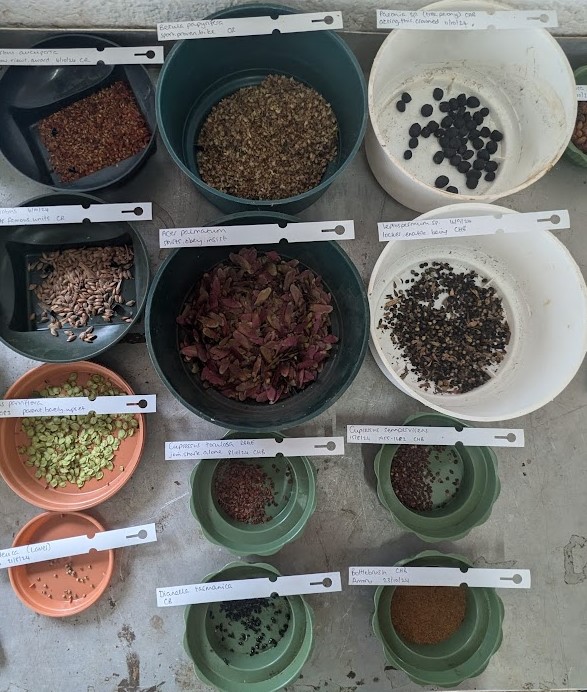
This autumn the Grounds team and budding volunteers have been seed saving from a range of the plants and trees that happily grow on our grounds. We are blessed with such a large range growing on our grounds and to keep their heritage alive, we are going to try and sow them at our grounds nursery.

What is seed saving? Seed saving is collecting seeds from trees and shrubs with the intention of trying to recreate the conditions required for germination in a nursery.

Why seed save? Plants are continuously evolving to suit their conditions. By saving seeds from species on the university grounds, we are building a community of plants and trees that would be more resilient than, for example, importing one from Europe which has experienced difficult growing conditions and soil.

Why grow from seed rather than cuttings? Growing from seed will create a new genetically diverse plant, whereas taking a cutting will only recreate the same genetics. So by growing from seed we increase the diversity of the species; this makes it less susceptible to disease and hopefully more adapted to its conditions.

Gardener Chess said ‘”Looking for a tree or plant seed opens up a whole new way of seeing and understanding them. It has helped tenfold with my identification ability, but also it’s exciting to find seed pockets/fruits and then finding out what mechanisms they have created for the seed dispersal. Some seed pockets open with heat, some seeds are nestled away until the right conditions for the cones to open, some seeds are covered by multiple layers of protection, some seeds are the size of a fingertip and some seeds the size of a fingernail. The diversity is fascinating, particularly when there is a large tree, the Giant Redwood for example, which has seeds as small as a fingernail!”

Nursery Manager Jess said “It has been really exciting seeing all of the seeds collected from across the grounds. It has been a real learning curve discovering all the techniques we have needed to use to clean the seeds and break seed dormancy for different species. We now have pots of seeds on a heated bench, in a cold frame and bags of seeds in the fridge. Fingers crossed for success!“



